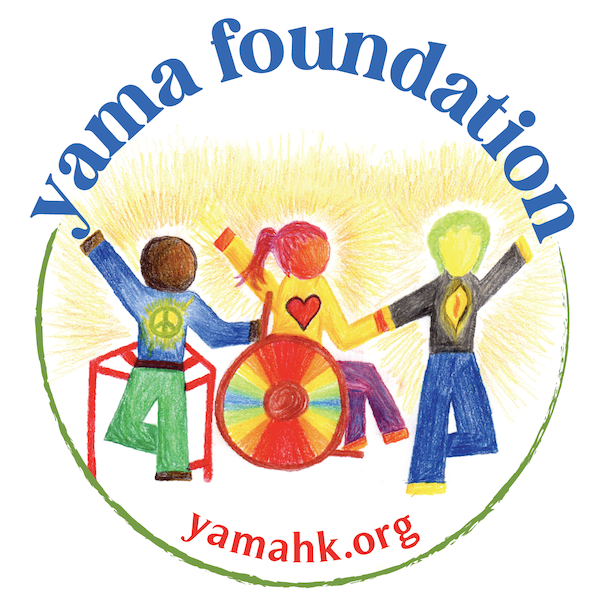Teaching Mindfulness To Children 教導孩子正念
For children to develop mindful awareness, parents must cultivate three essential needs for the children 為了讓孩子培養正念意識,父母必須培養孩子的三個基本需求:
Physical and emotional safety
身體及情緒安全Authentic relationship connections
關系之間實在的聯繫Ability for the parent to regulate their emotions and calm down their nervous systems
父母調節情緒和平服神經系統的能力
Actually all of us need those things, even as adults. However if we didn’t have all of these three essential needs met in our own childhoods, it’s important to do the work to create those skills for ourselves so we can pass them on to our children.
事實上,我們所有人,即使是成年人都需要這些條件。然而,如果我們在童年時沒有滿足所有這三個基本需求,那麼為自己創造這些技能就更重要,讓我們可以將它們傳給的孩子。
Here’s how you can cultivate these skills within yourself and impart mindfulness with your children in fun and creative ways.
以下是如何自我培養這些技能的要點,並以有趣和創造性的方式向孩子傳授正念。
BECOME PRESENT 常處於當下
Get out of your head and into your body — taking time to participate in embodied activities such as sports, yoga, weight training, dancing and more. Invite your child to join in on physical activities that you can both enjoy together:
走出您的頭腦,把注意進入您的身體 —— 花時間參加具體的活動,如運動、瑜伽、舉重訓練、跳舞等等。邀請孩子一起參與您們都喜愛的體育活動::
High energy child: running, climbing, jumping, sport, dancing
高能量活躍的兒童: 跑步、攀爬、跳躍、運動、跳舞Low energy child: cuddling, shoulder rub, massage train
低能量少活動的兒童: 擁抱、揉肩、按摩火車
Massage Train 按摩火車
Everyone in the family sits on the floor cross legs in a line. Hands on each other shoulders and massage the person in front of you. The person at the back of the line calls out the movements: “Rub the shoulders,” “Karate chops” “Massage up, down, sideways,” etc. Connection and safety through loving contact with parents can be very self-regulating for children.
家裏的每個人都排成一排盤腿坐在地上。雙手放在您面前的人的肩膀上為他按摩。排在後面的人喊出動作:“揉肩膀”、“空手道劈”、“向上、向下、向側面按摩”等。通過與父母充滿愛的接觸與孩子建立聯繫和安全感,對孩子來說可以很好地學會自我調節。
ESTABLISH AWARENESS 建立覺知
When your child talks to you, it is crucial to stop what you are doing and socially engage with them. First and foremost, get rid of distractions (especially phones / devices) when interacting with children. Turn to face them, make eye contact, and ensure your body language is in listening mode (e.g., not tapping your leg in impatience). To practice deep listening, mirror what they say, and acknowledging any emotions they might be feeling.
當您的孩子和你說話時,放下所有您正在處理的事情並與他們進行互動是至關重要的。首先,在與孩子互動時不要分心(尤其是手機/裝置)。轉身面向他們,眼神直接交流,並確保您的身體語言處於聆聽模式(例如,不要不耐煩地敲打自己的腿等)。練習深度傾聽,反映他們所說的,並承認他們可能感受到的任何情緒。
Mirroring Movements 鏡像活動
Sit or stand opposite your child and hold your hands up to each other, an inch away from each other. Allow your child to initiate the movement and you become their mirror reflection. Move around slowly, keeping your eyes connected and bodies in synchronicity. Change over and you take a turn leading the movement. This allows you both to attune to each other, which enhances connection and communication.
與孩子面對面地坐或站著,雙方雙手向上舉起,彼此相距一英寸。 讓孩子主動以手自由地帶動動作,您就會成為他的鏡像。 慢慢地移動,保持您的眼睛和身體同步。 然後換過來由您引領,再輪流帶領動作。 這讓你們倆都能互相協調,從而加强聯系和溝通。
SHOW YOUR AUTHENTICITY 顯示您的真實性
As parents, we try to hide our vulnerabilities in front of our children, however, our children are completely aware of and connected to our emotions. They feel what we feel and it can be confusing if they sense we are upset, but then pretend that we are not. Be true to your feeling and learn how to express them healthily and honestly. If your child asks if you are upset, instead of saying that you are fine, you can choose a response that shows that you are upset, but are finding ways to calm down. Be aware of your own stress levels and unresolved issues, as kids reflect them and have a way of coaxing them out of you. If needed, create a support system for your own personal needs (without neglecting your children’s needs) and explore self-care activities for you and for your whole family.
作為父母,我們常試圖在孩子面前隱藏自己的脆弱。然而,我們的孩子能完全意識到並與我們的情緒聯繫在一起並感受到了我們的感受。如果他們感覺到我們不高興時而我們卻假裝不是,這可能會讓他們感到困惑。忠於您自己的感受,學會如何健康坦誠地表達。當您的孩子探問您是否感到難過時,您可以選擇一個表明您很難過,並正在尋找方法讓自己平靜下來作回答,而不是說“沒事”。常注意自己的壓力水平和未解決的問題,因為孩子會感應到這些問題,並找辦法把它從您心中撩起來。 如有需要,為自己的個人需求建立一個支援系統(但不要忽視孩子的需求),並為自己和一家探索自我照顧活動。
Worry Bubbles 擔心氣泡
Hand out pretend bubble gum. Pretend to chew the gum and then together, blow bubbles using your hands to show how big the bubbles are. Ask your child to think of any negative thoughts, worries or concerns they have and blow it into the bubble. The more worries, the bigger the bubble. Take three or four breaths. Then, throw the bubble into the sky and as it rises up and up and up, wave it goodbye. Repeat if needed. Tell your children that whenever they feel stressed, they can practice blowing them into the worry bubbles.
假裝從手中分發百寶膠. 放在口中裝著咀嚼然後吹出泡泡,看看有多大。讓您的孩子想想他們有的任何消極想法、擔憂或疑慮,把它們吹進幻想的百寶膠泡泡裡。擔憂越多,泡沫就越大。 做三到四次。然後,將泡泡扔向天空,隨著它不斷升起,向它揮手告別。如果需要,可重複上述步驟。 讓您的孩子知道每當他們感到壓力時,可以使用這個練習把憂慮吹進的泡泡裏。
SELF-REGULATION TOOLS 自我調節工具
Your nervous system, and that of your child are connected to the surrounding environment, people, culture and community. When a child can witness how a primary caregiver interacts with their environment, finding ways to manage stress and self-regulate, they will learn from that and be more inclined to imitate you, exploring other ways to self-regulate. It’s different for all children (and grown ups). You also don’t need to have all the answers. Kids can regulate you as well — a cuddle and smelling your child’s hair can do wonders to calm you down after a hard day. Choose loving kindness and compassion to help you and your family through hard days.
您和您孩子的神經系統與周圍的環境、人、文化和社區都息息相關。當孩子能够親眼目睹主要照顧者如何與他們的環境互動,找到應對壓力和自我調節的方法時,他們將從中學習,並更傾向於模仿你,探索其他自我調節的方法。這對所有的孩子(和成年人)來說都是不同的,您亦並不需要知道所有答案。孩子也可以調節您的情緒 —— 擁抱和嗅嗅孩子的頭髮亦可讓您在勞碌一天後平靜下來。選擇以慈愛和同情心來幫助您和您的家人一起度過艱難的日子。
Star Breath 星星呼吸法
Hold one hand in front of you and spread out your fingers. With the other hand, trace your index finger from the base of the thumb up to the tip of the thumb and inhale. As you exhale, trace your finger down to the space between the thumb an the index finger. Inhale and trace your finger to the tip of the index finger. Exhale to the space between the index and middle fingers. Inhale to the tip of the middle finger, exhale to the space between the middle and ring fingers. Continue until you do the whole hand. Option to come back the other way and also to practice swapping hands and repeat the whole thing again.
把一隻手放在面前,張開手掌。一路吸氣時用另一隻手的食指從張開的手的拇指底部源著手形一直引劃到拇指尖。 一路呼氣,將手指向下貼著移拇指動到和食指之間的空間。 吸氣,手指移到食指指尖。 呼氣食指移到和中指之間的空隙。 吸氣移至中指指尖,呼氣至中指和無名指之間的空間。 一路繼續,直到完成整隻手。 然後可選擇從完成點返回起步點,也可以練習交換雙手並重複整個過程。
We hope you enjoy these activities. Please let us know how they work out for you!
我們希望您喜歡這些活動。請讓我們知道它們是如何幫助到您!

